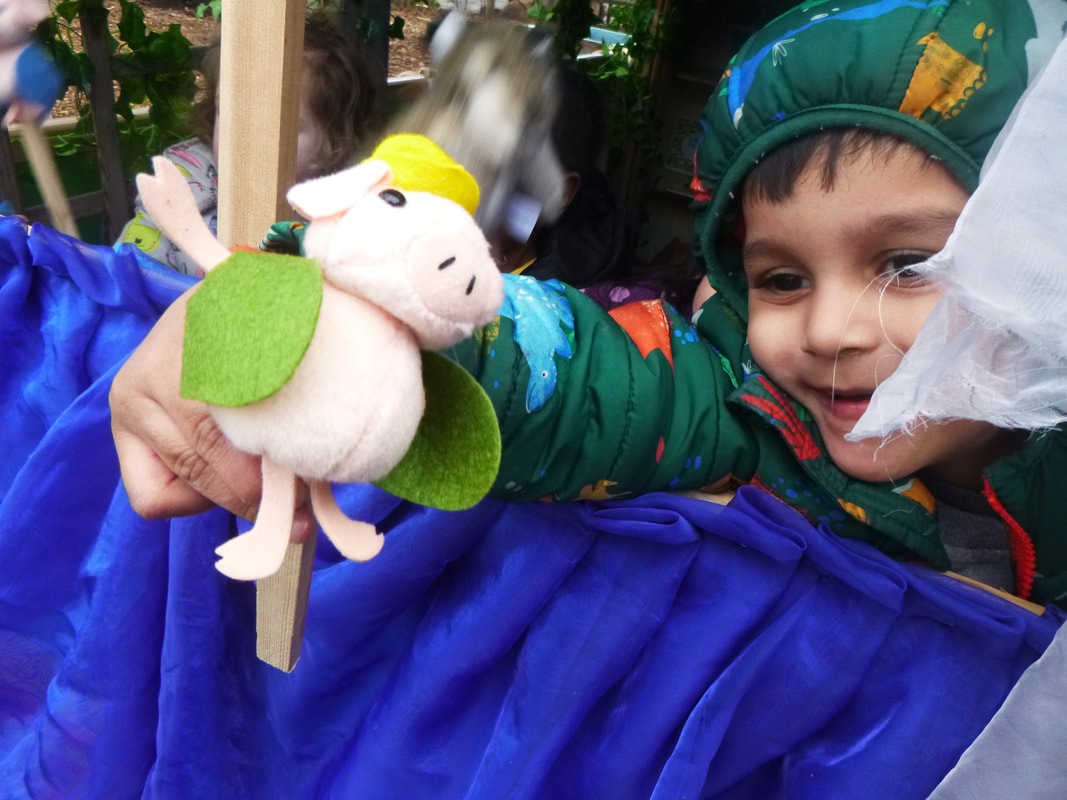7. Make up your own stories
|
First milestone: children take part in pretend play, making up or developing a story.
|
Children may begin by pretend-playing on their own with small world toys like farm animals, wild animals, dinosaurs or Duplo people. They begin to add sound effects, voices and act out everyday scenarios or past events from their family with the toys. They may put on a costume to become a superhero or another character. Over time, their play becomes more complex. They are able to play with other children, developing the play together (e.g. deciding who will play what role in the home corner, or telling a story with the Duplo people where different Duplo people have different characters). |
|
Second milestone: children take part in interactive reading. They respond to the features of the story. Children engage in number rhymes with props and join in with the actions.
|
As children become more used to interactive reading, they ask questions and make links between what happens in the story and their own experiences. They may begin to guess what a character might feel, do or say next and make suggestions about the next part of the story.
Children join in with rhymes and songs e.g. repeating words or following actions. They may begin to notice words that rhyme and suggest their own rhyming words. Children play with props to retell/make up their own stories. They may begin to use tone of voice, body language and expression in their role play. |
|
Third milestone: children take part in telling a story using the ‘Tales Toolkit’ approach with adult help or can create their own story of their day using a visual timetable. They begin to become familiar with the way stories are structured.https://talestoolkit.com/ |
As children become more used to using the ‘Tales Toolkit approach, they can increasingly take over and use the symbols and the props. They can make up their own story or ‘tell the story of their day in nursery’ with little prompting from the adult. They may begin to record their stories in marks and drawings or with simple story maps; either collaboratively with others or independently. |
Final milestone: children use the Tales Toolkit materials to develop the character, setting, problem and solution for their story. They tell their story to one or more people. Children begin to act out their own story or other children’s stories using the ‘Helicopter story’ approach. https://helicopterstories.co.uk/



